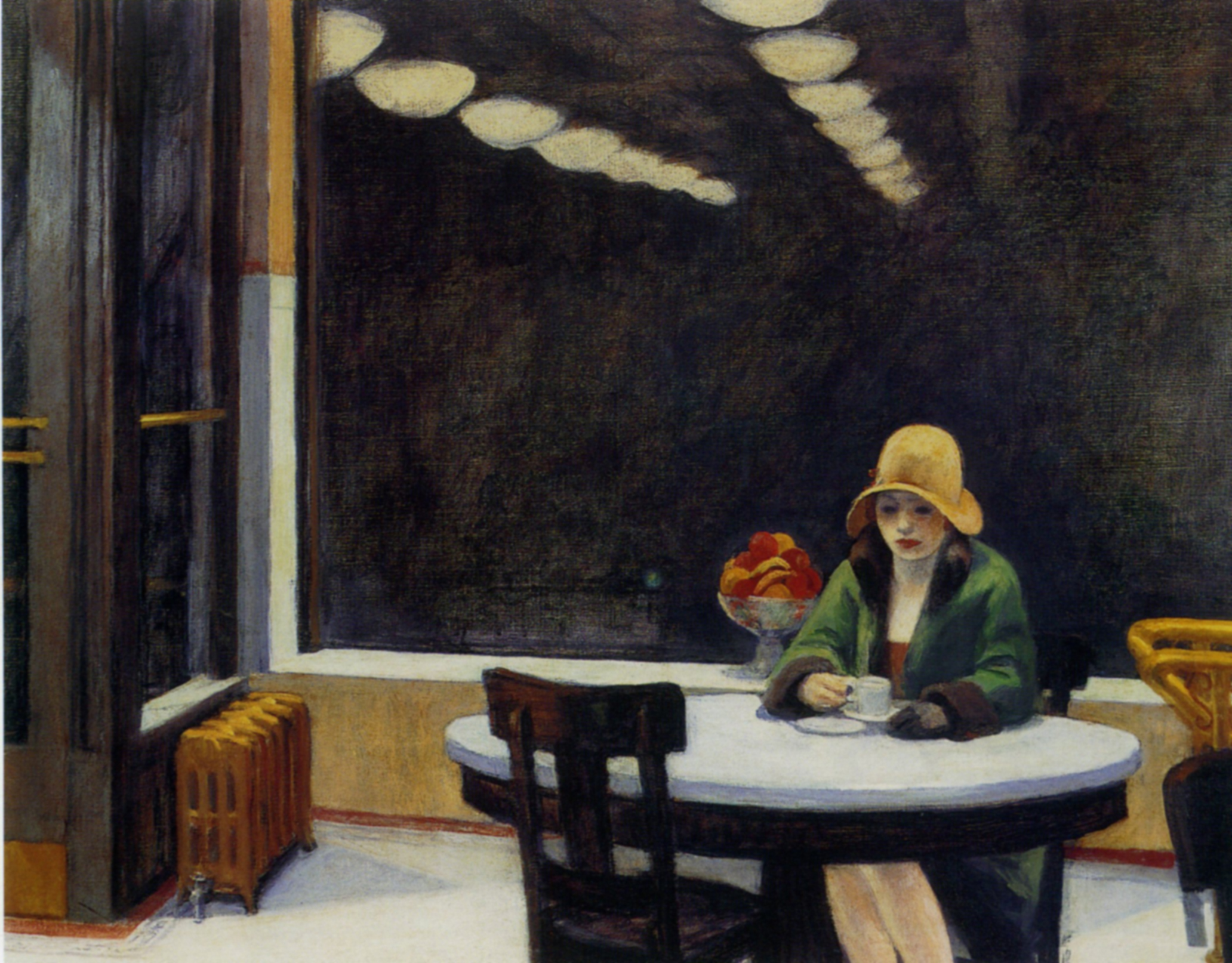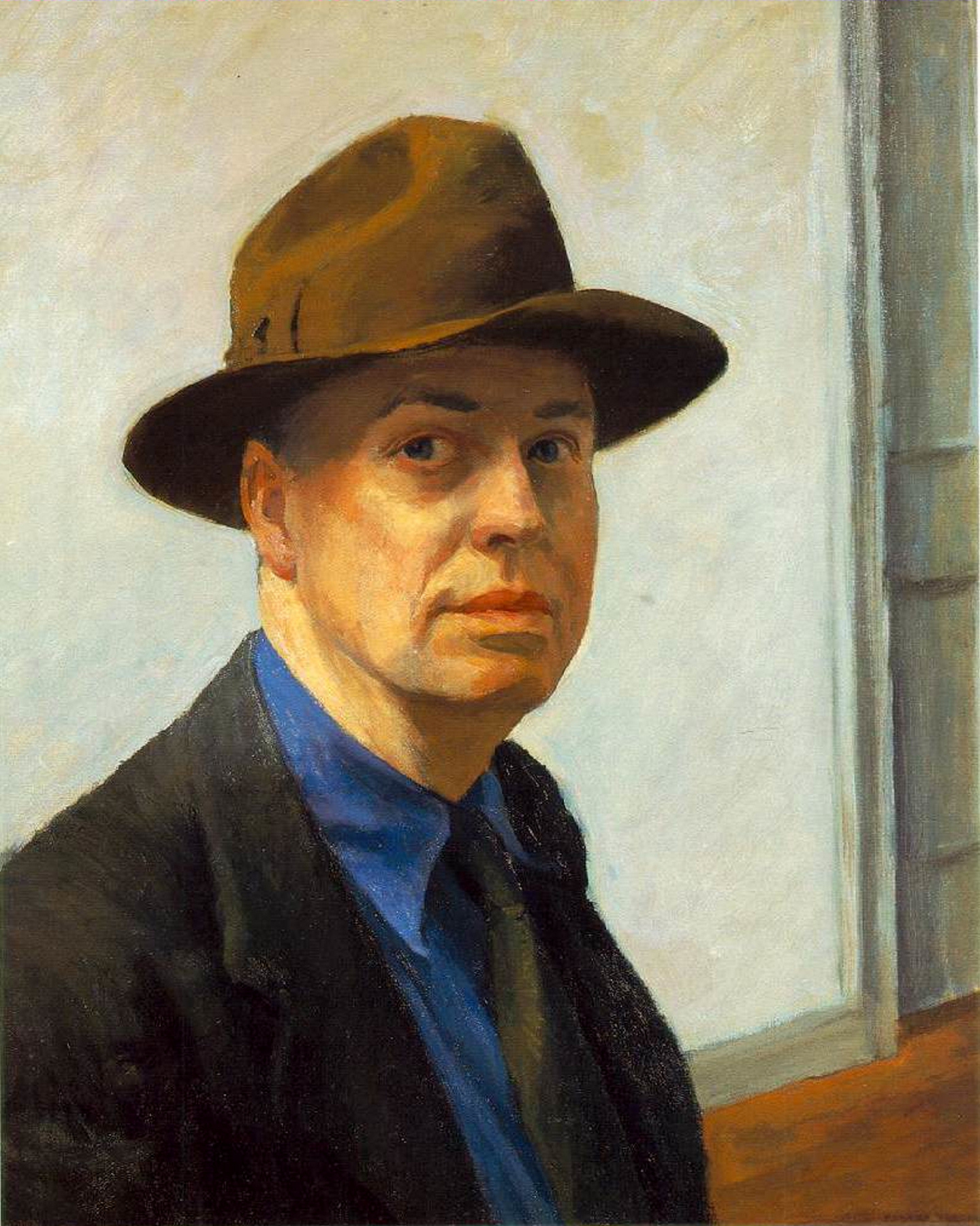The painting portrays a lone woman staring into a cup of coffee in an Automat at night. The reflection of identical rows of light fixtures stretches out through the night-blackened window.
Hopper's wife, Jo, served as the model for the woman. However, Hopper altered her face to make her younger (Jo was 44 in 1927). He also altered her figure; Jo was a curvy, full-figured woman, while one critic has described the woman in the painting as "boyish" (that is, flat-chested). As is often the case in Hopper's paintings, both the woman's circumstances and her mood are ambiguous. She is well-dressed and is wearing makeup, which could indicate either that she is on her way to or from work at a job where personal appearance is important, or that she is on her way to or from a social occasion. She has removed only one glove, which may indicate either that she is distracted, that she is in a hurry and can stop only for a moment, or simply that she has just come in from outside and has not yet warmed up. But the latter possibility seems unlikely, for there is a small empty plate on the table in front of her cup and saucer, suggesting that she may have eaten a snack and been sitting at this spot for some time.
Whatever the hour, the restaurant appears to be largely empty and there are no signs of activity (or of any life at all) on the street outside. This adds to the sense of loneliness, and has caused the painting to be popularly associated with the concept of urban alienation. One critic has observed that, in a pose typical of Hopper's melancholic subjects, "the woman's eyes are downcast and her thoughts turned inward." Another critic has described her as "gazing at her coffee cup as if it were the last thing in the world she could hold on to."




Automat
oil on canvas • 71.4 cm × 91.4 cm
 Edward Hopper
Edward Hopper